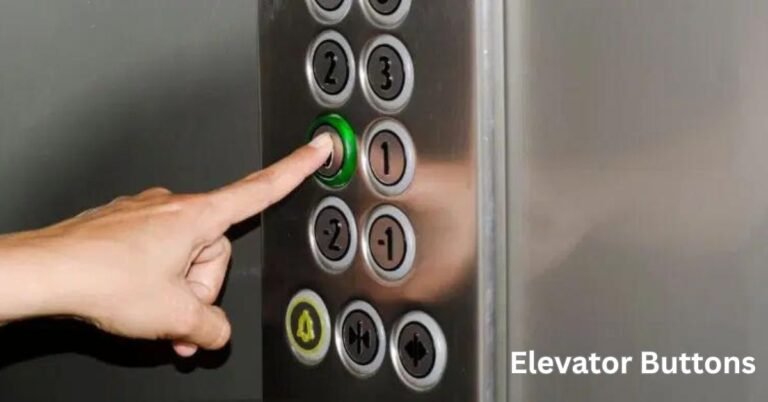Elevator buttons might seem like simple mechanisms, but they play a crucial role in our daily lives. These small yet essential components of vertical transportation systems offer a fascinating glimpse into engineering, design, and user experience. In this article, we’ll explore the history, functionality, etiquette, and innovative designs of elevator buttons, revealing the hidden world behind these often-overlooked features.
Table of Contents
ToggleThe History of Elevator Buttons
Early Mechanisms
The first elevators, dating back to ancient Rome, used a system of pulleys and hoists operated by hand. These early systems did not have buttons; instead, operators manually controlled the ascent and descent of the elevator. It wasn’t until the 19th century, with the advent of the safety elevator invented by Elisha Otis, that the modern elevator as we know it began to take shape.
The Introduction of Buttons
The introduction of buttons in elevators became widespread in the late 1800s. As elevators transitioned from being manually operated to automated systems, buttons became essential for user control. Early elevator buttons were often large, ornate, and made of brass or wood, reflecting the architectural style of the buildings they served.
How Elevator Buttons Work
Basic Mechanism
Elevator buttons operate through a simple yet effective mechanism. When a button is pressed, it sends an electrical signal to the elevator control system, which then directs the elevator car to the desired floor. This signal is typically relayed through a circuit board that processes the input and activates the motor.
Types of Buttons
Push Buttons
The most common type of elevator button, push buttons, can be found in nearly every elevator. They are straightforward and intuitive, allowing users to easily select their desired floor.
Touchless Buttons
In response to hygiene concerns, especially heightened during the COVID-19 pandemic, many elevators have introduced touchless buttons. These sensors detect hand movements, allowing users to select their floor without physical contact, reducing the spread of germs.
Digital Interfaces
Some modern elevators feature digital interfaces that offer a more interactive experience. These screens can display information about the building, wait times, and even advertisements. Users can select their floor using a touchscreen, making the experience more engaging.
The Design of Elevator Buttons
Aesthetic Considerations
The design of elevator buttons is not just functional; it also serves an aesthetic purpose. Designers consider the overall theme and style of the building when creating buttons. High-end buildings often feature sleek, minimalist designs, while more traditional buildings may have ornate buttons that match their historical context.
User-Friendly Design
User experience is paramount in elevator button design. Buttons are typically large and well-spaced to ensure ease of use. They are often illuminated to provide visual feedback, indicating that the signal has been registered. This design consideration is particularly important for individuals with disabilities or the elderly.
Elevator Button Etiquette
Waiting Your Turn
When waiting for an elevator, it’s essential to respect others in line. Allow passengers to exit the elevator before entering, and avoid crowding the door. If the elevator is busy, it’s polite to wait for the next one rather than trying to squeeze in.
Pressing the Button
If you’re waiting alone and the elevator doesn’t arrive promptly, it’s acceptable to press the call button once. Repeatedly pressing the button is not only unnecessary but can also be seen as impatience. Once you’ve pressed the button, it’s best to stand back and allow the elevator to arrive at its own pace.
Holding the Door
In some situations, you may need to hold the door for someone approaching the elevator. If you do, be cautious and ensure that you press the door-open button instead of forcing the doors to stay open. This helps maintain the safety of the elevator system.
Innovations in Elevator Button Technology
Smart Elevators
As buildings become smarter, so do elevators. Smart elevator systems use algorithms to optimize travel times and energy efficiency. Advanced buttons may be part of this system, allowing users to select their floors while the elevator automatically adjusts its route based on traffic patterns.
Customization Options
Some modern elevators offer customization options, allowing users to select their preferred button layout or interface style. This personalization enhances the user experience, making it more tailored to individual needs.
Safety Features
Innovations in safety features are also evident in elevator buttons. Many elevators now come equipped with emergency buttons that directly connect to building security or emergency services. These buttons often have a distinct color or design to ensure they’re easily identifiable in emergencies.
The Future of Elevator Buttons
Integration with Smart Technology
The future of elevator buttons is likely to involve further integration with smart technology. Imagine an elevator that recognizes your presence through facial recognition or a smartphone app that allows you to call the elevator before you even reach it. Such advancements could streamline the experience and enhance convenience.
Sustainability Considerations
With increasing attention on sustainability, future elevator systems may incorporate eco-friendly designs. This could include energy-efficient buttons that reduce power consumption or materials sourced from sustainable practices.
Conclusion
Elevator buttons, often overlooked in the hustle and bustle of daily life, represent a fascinating intersection of technology, design, and human interaction. From their historical roots to the modern innovations shaping their future, these small devices have a significant impact on our experience in vertical transportation.
Understanding the hidden world of elevator buttons not only enhances our appreciation for these everyday tools but also encourages us to engage with them thoughtfully. Whether it’s practicing good elevator etiquette or embracing new technology, the next time you press an elevator button, remember: you’re part of a long-standing tradition of engineering and design that keeps our world moving upward.
ALSO READ: Scratching the Surface: The Art of Back Scratchers

